Stuti Pathak
Graph-based Point Cloud Surface Reconstruction using B-Splines
Sep 19, 2025
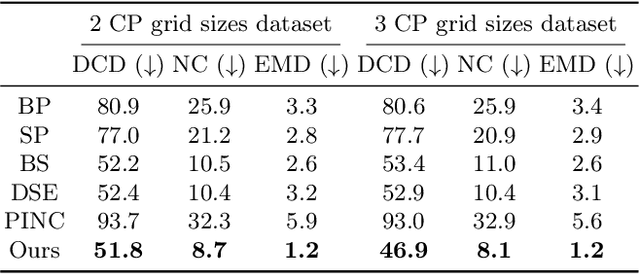


Abstract:Generating continuous surfaces from discrete point cloud data is a fundamental task in several 3D vision applications. Real-world point clouds are inherently noisy due to various technical and environmental factors. Existing data-driven surface reconstruction algorithms rely heavily on ground truth normals or compute approximate normals as an intermediate step. This dependency makes them extremely unreliable for noisy point cloud datasets, even if the availability of ground truth training data is ensured, which is not always the case. B-spline reconstruction techniques provide compact surface representations of point clouds and are especially known for their smoothening properties. However, the complexity of the surfaces approximated using B-splines is directly influenced by the number and location of the spline control points. Existing spline-based modeling methods predict the locations of a fixed number of control points for a given point cloud, which makes it very difficult to match the complexity of its underlying surface. In this work, we develop a Dictionary-Guided Graph Convolutional Network-based surface reconstruction strategy where we simultaneously predict both the location and the number of control points for noisy point cloud data to generate smooth surfaces without the use of any point normals. We compare our reconstruction method with several well-known as well as recent baselines by employing widely-used evaluation metrics, and demonstrate that our method outperforms all of them both qualitatively and quantitatively.
Revisiting Point Cloud Completion: Are We Ready For The Real-World?
Nov 26, 2024Abstract:Point clouds acquired in constrained and challenging real-world settings are incomplete, non-uniformly sparse, or both. These obstacles present acute challenges for a vital task - point cloud completion. Using tools from Algebraic Topology and Persistent Homology ($\mathcal{PH}$), we demonstrate that current benchmark synthetic point clouds lack rich topological features that are important constituents of point clouds captured in realistic settings. To facilitate research in this direction, we contribute the first real-world industrial point cloud dataset for point cloud completion, RealPC - a diverse set of rich and varied point clouds, consisting of $\sim$ 40,000 pairs across 21 categories of industrial structures in railway establishments. Our benchmark results on several strong baselines reveal a striking observation - the existing methods are tailored for synthetic datasets and fail miserably in real-world settings. Building on our observation that RealPC consists of several 0 and 1-dimensional $\mathcal{PH}$-based topological features, we demonstrate the potential of integrating Homology-based topological priors into existing works. More specifically, we present how 0-dimensional $\mathcal{PH}$ priors, which extract the global topology of a complete shape in the form of a 3-D skeleton, can assist a model in generating topologically-consistent complete shapes.
How to turn your camera into a perfect pinhole model
Sep 20, 2023Abstract:Camera calibration is a first and fundamental step in various computer vision applications. Despite being an active field of research, Zhang's method remains widely used for camera calibration due to its implementation in popular toolboxes. However, this method initially assumes a pinhole model with oversimplified distortion models. In this work, we propose a novel approach that involves a pre-processing step to remove distortions from images by means of Gaussian processes. Our method does not need to assume any distortion model and can be applied to severely warped images, even in the case of multiple distortion sources, e.g., a fisheye image of a curved mirror reflection. The Gaussian processes capture all distortions and camera imperfections, resulting in virtual images as though taken by an ideal pinhole camera with square pixels. Furthermore, this ideal GP-camera only needs one image of a square grid calibration pattern. This model allows for a serious upgrade of many algorithms and applications that are designed in a pure projective geometry setting but with a performance that is very sensitive to nonlinear lens distortions. We demonstrate the effectiveness of our method by simplifying Zhang's calibration method, reducing the number of parameters and getting rid of the distortion parameters and iterative optimization. We validate by means of synthetic data and real world images. The contributions of this work include the construction of a virtual ideal pinhole camera using Gaussian processes, a simplified calibration method and lens distortion removal.
One-shot Feature-Preserving Point Cloud Simplification with Gaussian Processes on Riemannian Manifolds
Mar 27, 2023Abstract:The processing, storage and transmission of large-scale point clouds is an ongoing challenge in the computer vision community which hinders progress in the application of 3D models to real-world settings, such as autonomous driving, virtual reality and remote sensing. We propose a novel, one-shot point cloud simplification method which preserves both the salient structural features and the overall shape of a point cloud without any prior surface reconstruction step. Our method employs Gaussian processes with kernels defined on Riemannian manifolds, allowing us to model the surface variation function across any given point cloud. A simplified version of the original cloud is obtained by sequentially selecting points using a greedy sparsification scheme. The selection criterion used for this scheme ensures that the simplified cloud best represents the surface variation of the original point cloud. We evaluate our method on several benchmark datasets, compare it to a range of existing methods and show that our method is competitive both in terms of empirical performance and computational efficiency.
Segmentation of Microscopy Data for finding Nuclei in Divergent Images
Aug 23, 2018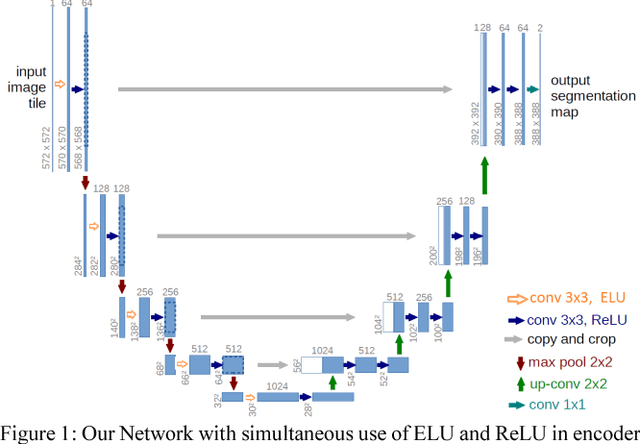
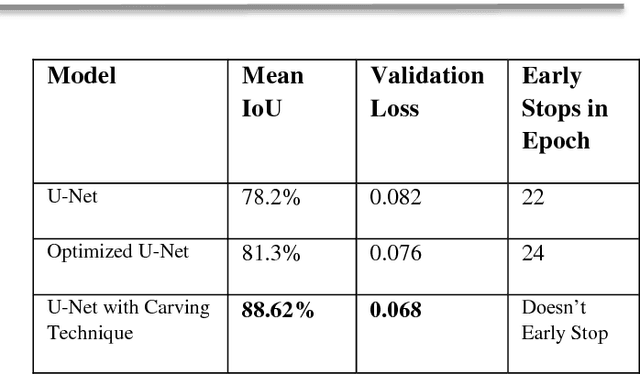
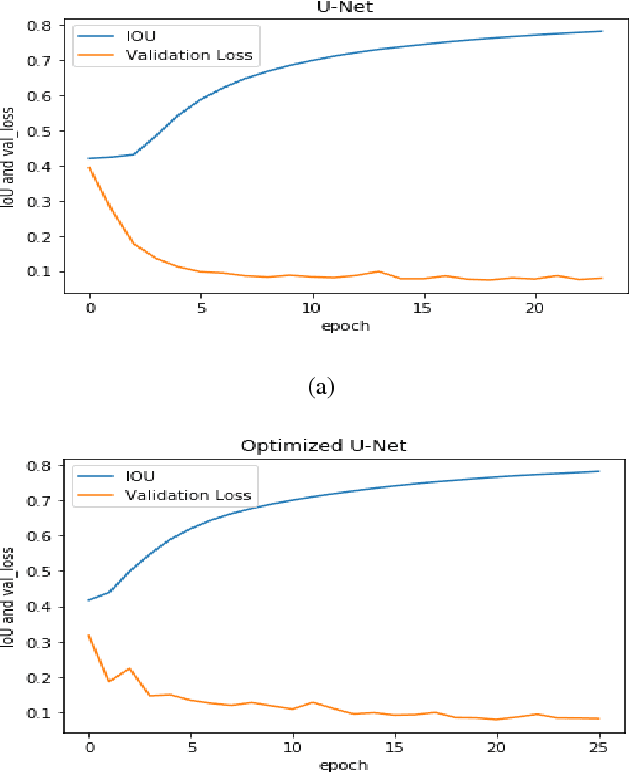
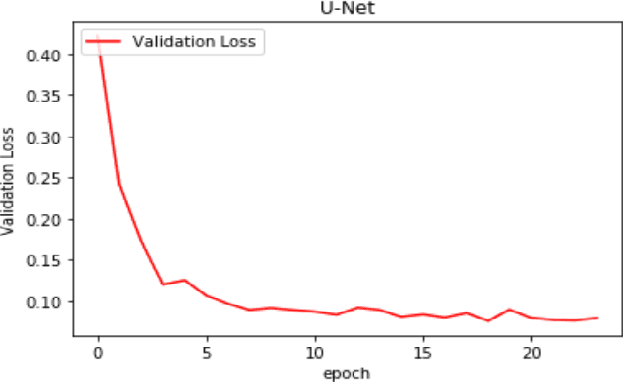
Abstract:Every year millions of people die due to disease of Cancer. Due to its invasive nature it is very complex to cure even in primary stages. Hence, only method to survive this disease completely is via forecasting by analyzing the early mutation in cells of the patient biopsy. Cell Segmentation can be used to find cell which have left their nuclei. This enables faster cure and high rate of survival. Cell counting is a hard, yet tedious task that would greatly benefit from automation. To accomplish this task, segmentation of cells need to be accurate. In this paper, we have improved the learning of training data by our network. It can annotate precise masks on test data. we examine the strength of activation functions in medical image segmentation task by improving learning rates by our proposed Carving Technique. Identifying the cells nuclei is the starting point for most analyses, identifying nuclei allows researchers to identify each individual cell in a sample, and by measuring how cells react to various treatments, the researcher can understand the underlying biological processes at work. Experimental results shows the efficiency of the proposed work.
 Add to Chrome
Add to Chrome Add to Firefox
Add to Firefox Add to Edge
Add to Edge